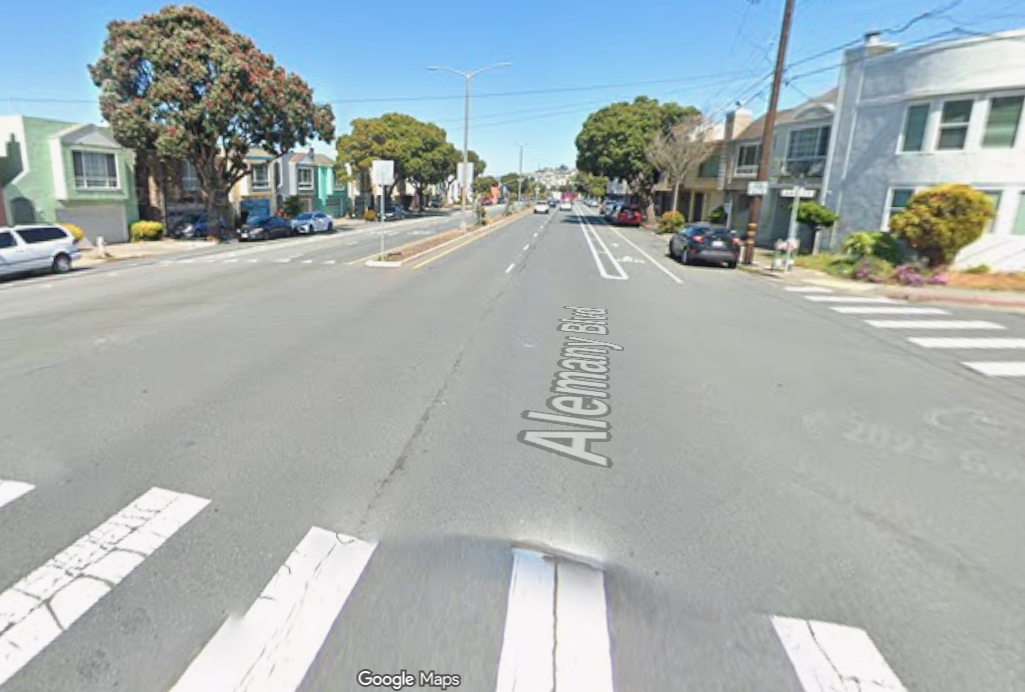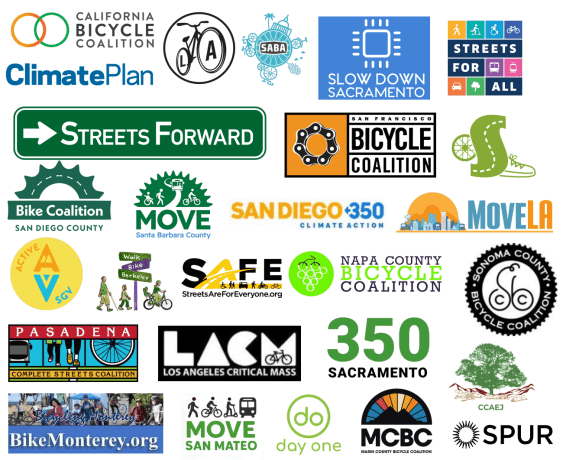 Neighbors gather for tips and tricks to Mission Roots gardening project, 23rd and Florida
Neighbors gather for tips and tricks to Mission Roots gardening project, 23rd and Florida We walk on layers of history. In our neighborhoods, in our cities, there were once natural phenomena, like creeks, sand dunes, hills, and forests. Over time they were covered in farms, factories, houses, and most of all, streets. At first those streets were dirt, often thick and muddy. Around the middle of the 19th century they started to be used for railroads, both intercity, and local streetcar and cable car lines. Sometimes the shape of our 21st century streetscape is a ghost of those old train lines.
In the Mission, where I live, all of this pertains. But more than the questions of ecological succession, including natural and human, as well as agricultural, industrial, and residential uses of land, there are the shifting human communities themselves. At any given moment in time there are diverse populations living side-by-side, right next door, right on top of each other, but sometimes that close proximity does not include much awareness or daily interaction.
Last week I wrote about Jane Martin and her project PlantSF, and how it inspired a couple of dozen families along the nearby blocks of Harrison, Alabama, 22nd, 23rd, 24th and 25th to begin the historically overdue process of depaving this cemented neighborhood. I walked around speaking with folks this past Saturday, as "Mission Roots" took hold in many sidewalk gardens, and I had more than one reaction. Of course I was delighted to see all the effort being made to green the city, to reverse the domination of 20th century urban design. I met many lovely folks, most of whom were homeowners working in front of their own properties. Apparently the organizers had successfully garnered a $50,000 grant to provide materials, and the cement cutting services were donated by a local company. The homeowners had to apply to the city for permission, using the one-page permit Jane Martin helped design, and that involved a modest fee and a drawing that conforms to city regulations in terms of accessibility, utilities, etc. Interestingly, one of the main organizers of this effort, Audrey Newell, confirmed my hunch that 75% of the participants had approached the organizers, rather than the organizers having to go out and convince people.
 Audrey Newell demonstrates planting, Jan. 10, 2009.
Audrey Newell demonstrates planting, Jan. 10, 2009. But I couldn't help but notice in this preponderant Latino neighborhood that the entire population engaged in this project were non-Latino, mostly white with a few Asians. Far be it from me to blame the people who were actually doing something proactive about urban ecology and doing it in such a neighborly and community-oriented fashion. No, they're not the problem. The problem is deeper, having to do with issues of private property, displacement, and gentrification. Because it's clear that these relatively affluent, mostly recently moved-in folks were wittingly or unwittingly part of a process that is altering the neighborhood, making it whiter and richer, and making it harder to live here if you are a renter, poor, Latino without a union or well-paying job, etc. Beautifying the streets is a welcome development, and the people doing it are obviously committed to living here and making the neighborhood more pleasant for everyone, but something more is needed.
 Mission Roots on Harrison between 22nd and 21st.
Mission Roots on Harrison between 22nd and 21st. So how do neighbors reach across the divide? I'm hoping that this newly formed "Mission Roots" association will become a place that invites more and more people to engage in similar projects, eventually surpassing the limits of sidewalk gardens and taking on bigger issues of our shared commons. "One Lane for Food" anyone? Commenters on last week's post were quick to defend the sidewalks for pedestrian use and suggested that these efforts ought to be pushing into the street more, taking space from cars and parking rather than pedestrians. I couldn't agree more! In fact, why aren't we already busy ripping a lane out of every street in the city, preparing the ground for food forests and urban self-sufficiency?
 Depaving beneath chestnut trees next to Kaliflower on 23rd St.
Depaving beneath chestnut trees next to Kaliflower on 23rd St. Anti-gentrification efforts have been stuck in opposing simple efforts like those produced by Mission Roots and PlantSF on the grounds that they lead to further displacement. But what really leads to further displacement is the institution of private property. Certainly the new homeowners (not all are new, but plenty are) are beneficiaries of a system that facilitates displacement of the less wealthy by the more wealthy, and we've seen that having devastating effect in San Francisco and especially in the Mission. But everyone needs a place to live and I'm disinclined to blame individuals who have moved in for a system in which we're all in it basically for ourselves. But now that we're here, and the neighborhood is in flux, isn't it incumbent on all of us to reach out, to find a way to overcome a paradigm of scarcity and replace it with the kind of barn-raising, garden-planting sociability we saw this weekend, perhaps better termed "shareCity"?
Beyond the exhorting, let's remember that no neighborhood is stable in this crazy world. Every one is subject to sudden poverty and displacement and "owning your house" (via a mortgage to our utterly corrupt and bankrupt banking system) is no solution… Layers of history help us remember how transient and ephemeral any population's claim to a specific neighborhood really is… This stretch of Harrison Street, for example, was once predominantly Irish and Italian, until the late 1950s and early 1960s when many white San Franciscans joined the national exodus to the suburbs, to be replaced by a large influx of Central Americans and some Mexicans.
 Crowds on Mission at 21st in1956, courtesy San Francisco History Center, SF Public Library.
Crowds on Mission at 21st in1956, courtesy San Francisco History Center, SF Public Library. Down at 21st and Harrison, where the elementary school Las Americas sits across from one of the new Mission Roots sidewalk gardens (the school itself is expected to soon plant gardens on their sidewalks too), there was until 1989 the John O'Connell Technical High School. It has since moved to a new building on Folsom between 20th and 19th, backing up on Harrison.
 John O'Connell Technical High School, 1953 (left, courtesy San Francisco History Center, SF Public Library) and today's Las Americas elementary school, both at SW corner of 21st and Harrison.
John O'Connell Technical High School, 1953 (left, courtesy San Francisco History Center, SF Public Library) and today's Las Americas elementary school, both at SW corner of 21st and Harrison. The original O'Connell building was damaged in the 1989 earthquake and closed. Back in 1946 it became the Samuel L. Gompers Trade School, named after the early trade union leader. And even earlier, the same structure was home to the Ford Motor Company where Model T cars were made in the 'teens.
 Old Ford factory at 21st and Harrison, which became Samuel Gompers Trade School in 1946 (courtesy San Francisco History Center, SF Public Library).
Old Ford factory at 21st and Harrison, which became Samuel Gompers Trade School in 1946 (courtesy San Francisco History Center, SF Public Library). Winding out between the Western Plywood company (which is still there between 22nd and 23rd on Harrison) and the diminutive Atlas Stair building was the old San Jose-San Francisco railroad. It went right up Harrison, and in more recent times freight trains were common on Harrison, once probably stopping to pick up newly manufactured Model-T's at the Ford factory. Even today there are hints of the days when Harrison was full of rail tracks instead of bike lanes. At the corner of 20th, diagonally across from Café Gratitude, a gray warehouse still has its old loading dock on the sidewalk where boxcars once sat for days at a time, as recently as the 1980s.
 Southern Pacific train on Harrison near 21st in 1905 (top, courtesy San Francisco History Center, SF Public Library) and an old loading dock still at 20th and Harrison (below).
Southern Pacific train on Harrison near 21st in 1905 (top, courtesy San Francisco History Center, SF Public Library) and an old loading dock still at 20th and Harrison (below). Strange modern layers sit on top of one another here too. Across the street are the schoolyards of the new John O'Connell High School. A field that had been left unfinished for two years after the school was opened was finally completed, but for some strange budgetary reason, the school district covered it in Astroturf! It's ironic that the school district is so backwards when twenty yards to the north on the same property is an old community garden started in the early 1980s by Jeff Miller (once president of San Francisco League of Urban Gardeners). It had fallen into disrepair a few years ago, but just in the past year some people have brought it back to life.
 (left) Community Garden on Harrison at back of O'Connell High School; (right) Astroturf field at O'Connell.
(left) Community Garden on Harrison at back of O'Connell High School; (right) Astroturf field at O'Connell. The zeitgeist of our time is reinhabitation, reinvigoraton, and reconnection to the possibilities of an urban nature that sustains and nurtures us. But to really go as far as we might, we'll have to go way beneath the pavement to bring forth fresh water, food security, and a new neighborliness based on resilient communities and local self-reliance. Such a sensibility is an antidote to the displacement paradigm that ignores important histories and fails to value a living legacy that enriches and deepens all our lives. We're all in this together, and that's becoming more obvious by the day.





